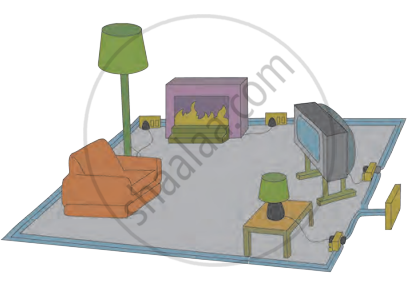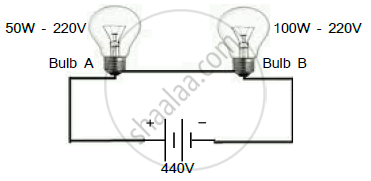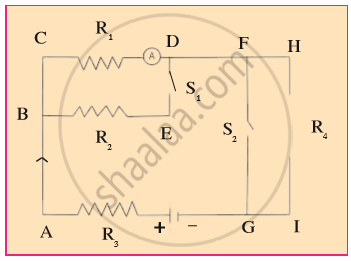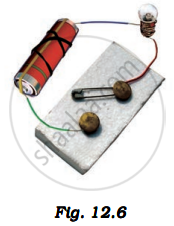Advertisements
Advertisements
प्रश्न
The accompanying figure shows some electrical appliances connected in a circuit in a house. Answer the following questions.
- By which method are the appliances connected?
- What must be the potential difference across individual appliances?
- Will the current passing through each appliance be the same? Justify your answer.
- Why are the domestic appliances connected in this way?
- If the T.V. stops working, will the other appliances also stop working? Explain your answer.

उत्तर
- The appliances are connected in parallel.
- The potential difference across each appliance should be the same as they are connected in parallel. The potential difference between live and neutral wire in domestic wiring is maintained at 220 V in India. Hence, the potential difference across each appliance should be 220 V.
- In general, different. We have `"I" = "V"/"R"`. Even if the voltage (V) is the same, the resistance (R) can be different. Hence, the current (I) through each appliance may not be the same.
- Domestic appliances are connected in parallel because this connection assures that even if one or more appliances become faulty or stop working, the working of others will remain unaffected.
- Other appliances won't stop operating even if the TV does because they are linked in parallel across the supply.
APPEARS IN
संबंधित प्रश्न
Find the odd one out and justify it.
Fuse wire, M.C.B., Rubber Gloves, Generator
Observe the following figure which bulb get fuse?

Resistances R1, R2, R3 and R4 are connected as shown in the figure. S1 and S2 are two keys. Discuss the current flowing in the circuit in the following cases.

- Both S1 and S2 are closed.
- Both S1 and S2 are open.
- S1 is closed but S2 is open.
Write the condition required for a circuit to be a closed circuit.
What is open circuit?
How much is the potential difference between live and neutral wires?
Increasing the current passing through the wire decreases the magnetic field intensity.
Flow of electricity through a closed circuit is _____.
Draw the circuit diagram for the series connection.
Higher Order Question
A student made a circuit by using an electric cell, a switch, a torch bulb (fitted in the bulb holder), and copper connecting wires. When he turned on the switch, the torch bulb did not glow at all. The student checked the circuit and found that all the wire connections were tight.
- What could be the possible reason for the torch bulb not glowing even when the circuit appears to be complete?
When a circuit is open, _____ cannot pass through it.
The wiring in a house consists of ______ circuits.
Explain about domestic electric circuits. (circuit diagram not required)
Assertion: In an open circuit, the current passes from one terminal of the electric cell to another.
Reason: Generally, the metal disc of a cell acts as a positive terminal.
______ is a kind of fish which is able to produce an electric current.
Will the bulb glow in the circuit shown in Fig. 12.6? Explain.

Write a short note on the different electrical circuits.
Overloading of electric circuits can lead to short-circuiting.
Name the device which is used to measure the strength of the electric current in an electric circuit.
